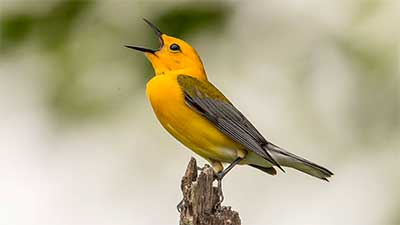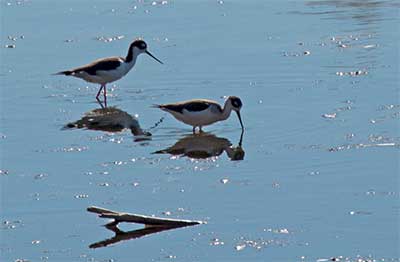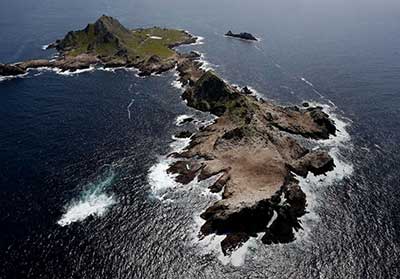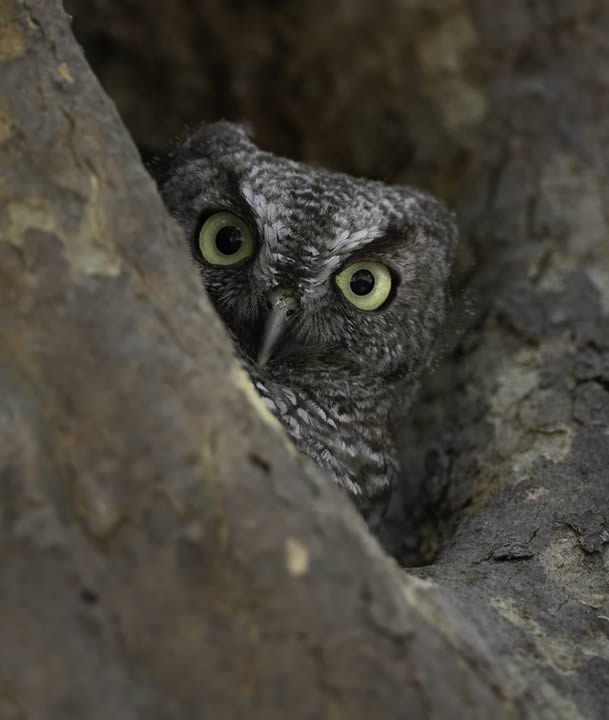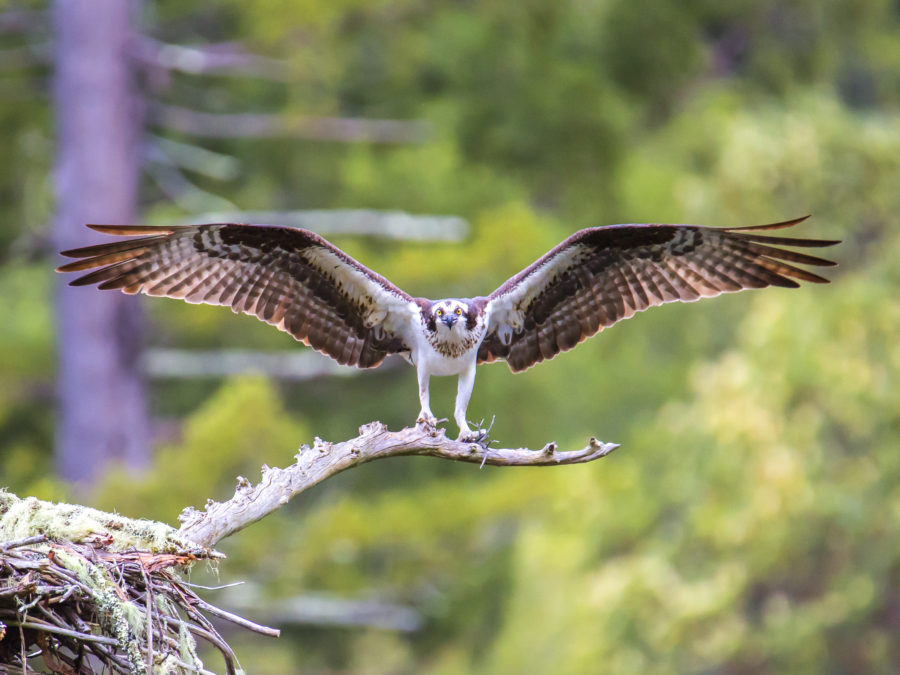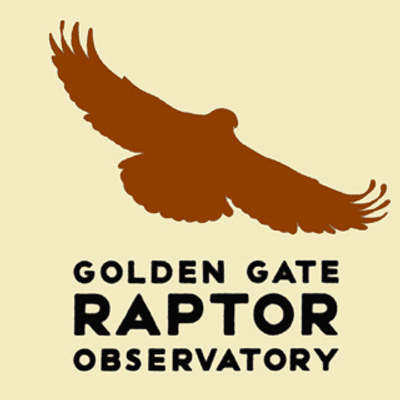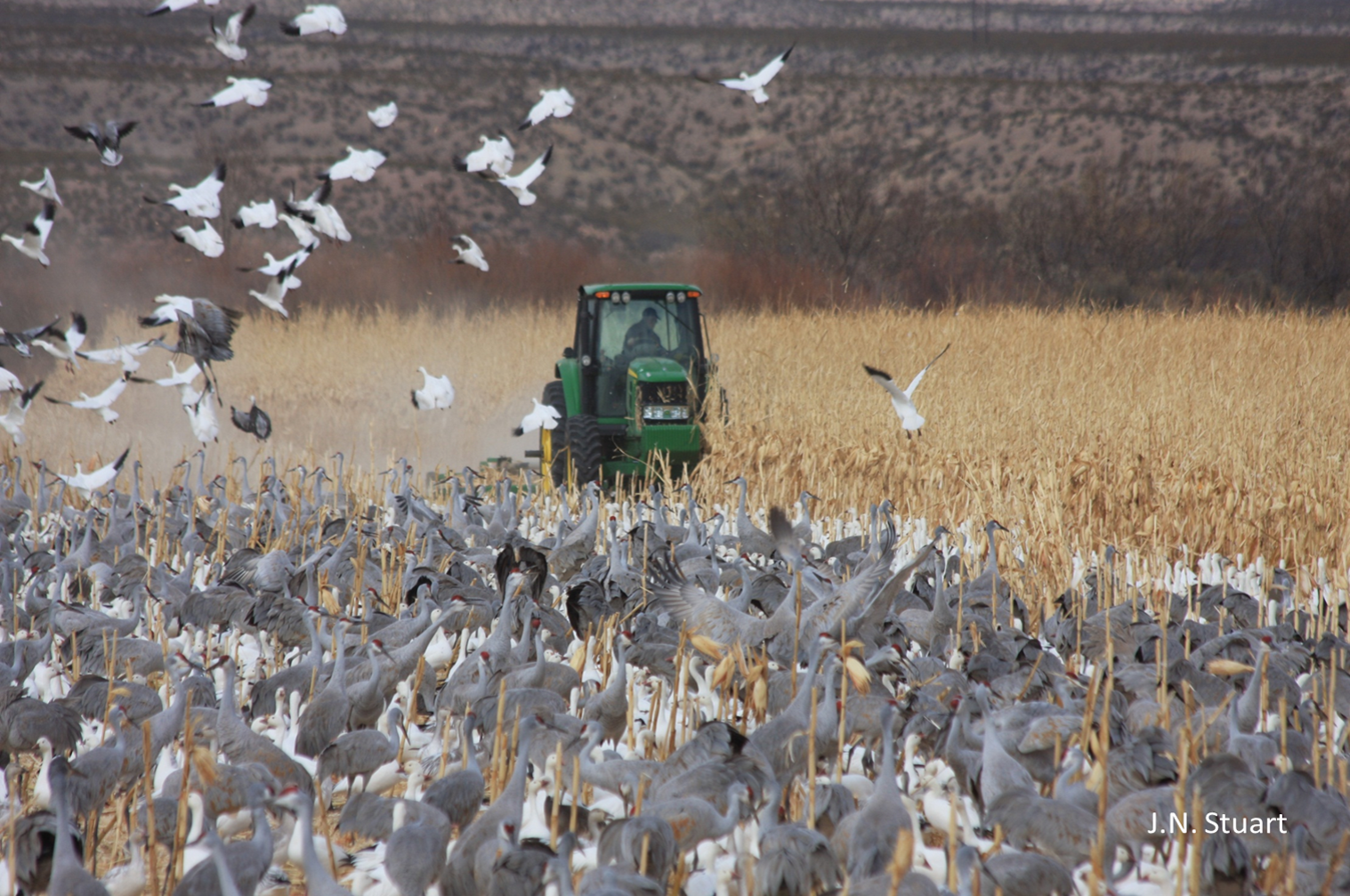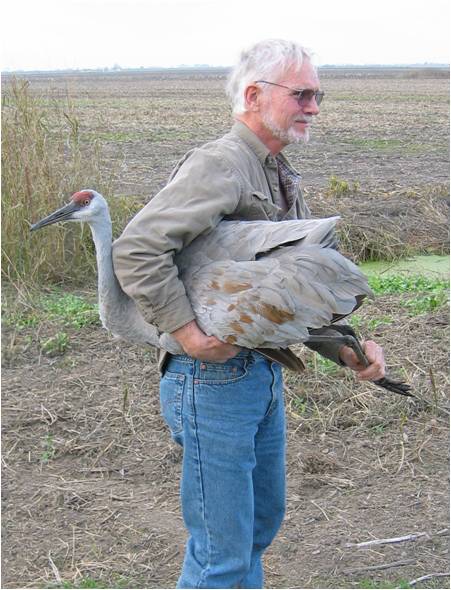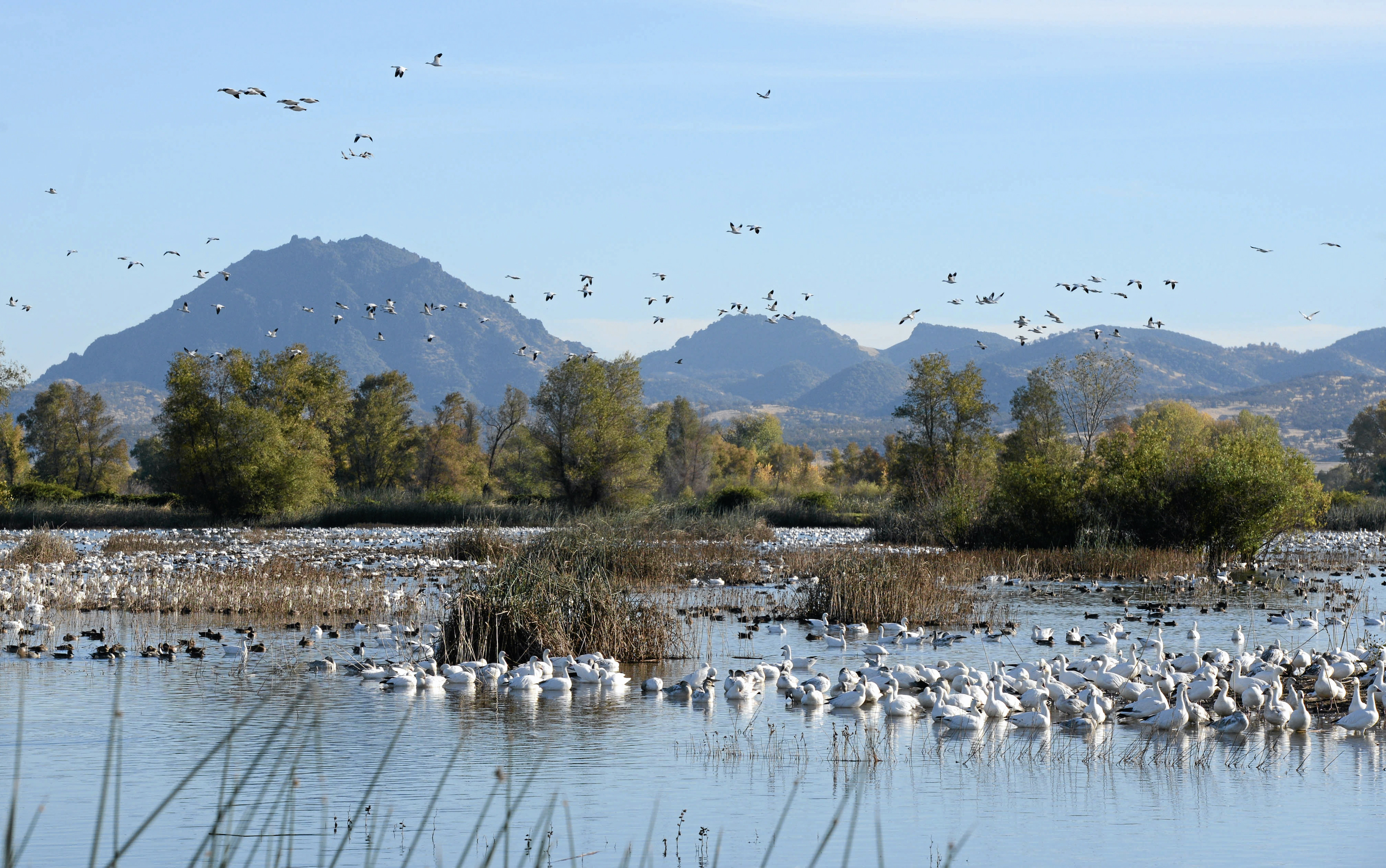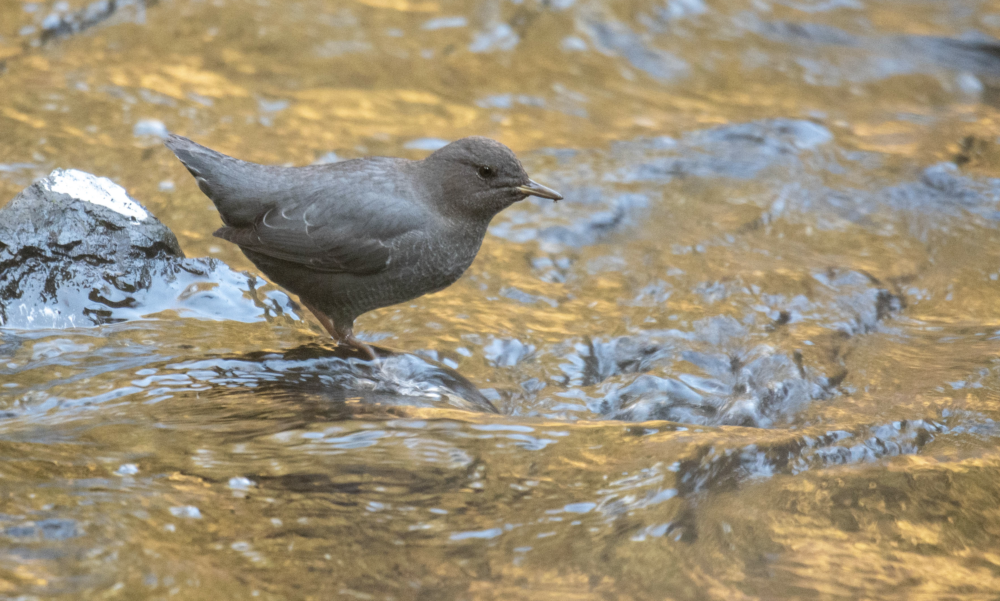Field Trips
Spring Bird Songs with Lisa Hug (3 Classes) – Registration Now Open
Five Brooks / Big Rock / Mount Burdell , United StatesSpring is the best time of year to hear and learn bird songs. Males are full of hormones and bursting with song. Many neo-tropical migrants are returning and vying for mates and territories. It is a very exciting time of year, so even if you dislike getting up early, it might be worth your while to join one or more of these classes. Participants will be asked to stay quiet to enable us to listen to the myriad of bird sounds. Wear comfortable walking shoes and bring layered clothing, water, binoculars, field guides, and snacks.
American Canyon Wetlands with Lucas & Mark Stephenson
CA, United StatesYouth Birder Lucas Stephenson will lead this fun trip to the American Canyon Wetlands that hosts species from the unique habitats found in American Canyon: Grassy Fields and Eucalyptus Groves, to the Tidal Mudflats and the Bay. The Wetlands are home to a diverse number of birds from Merlins and Peregrine Falcons, to Burrowing Owls, Marsh Wrens, Sora and Virginia Rails, migrating Black-bellied Plovers, Long-billed Curlews, Barrow’s Golden Eyes, and possibly even a Long-tailed Duck! Last year with Lucas, our group spotted an impressive 88 species! As per usual with Lucas and his Dad, we will be on the lookout for new local species of interest.
Spring Bird Songs with Lisa Hug (3 Classes) – Registration Now Open
Five Brooks / Big Rock / Mount Burdell , United StatesSpring is the best time of year to hear and learn bird songs. Males are full of hormones and bursting with song. Many neo-tropical migrants are returning and vying for mates and territories. It is a very exciting time of year, so even if you dislike getting up early, it might be worth your while to join one or more of these classes. Participants will be asked to stay quiet to enable us to listen to the myriad of bird sounds. Wear comfortable walking shoes and bring layered clothing, water, binoculars, field guides, and snacks.
Spring Bird Songs with Lisa Hug (3 Classes) – Registration Now Open
Five Brooks / Big Rock / Mount Burdell , United StatesSpring is the best time of year to hear and learn bird songs. Males are full of hormones and bursting with song. Many neo-tropical migrants are returning and vying for mates and territories. It is a very exciting time of year, so even if you dislike getting up early, it might be worth your while to join one or more of these classes. Participants will be asked to stay quiet to enable us to listen to the myriad of bird sounds. Wear comfortable walking shoes and bring layered clothing, water, binoculars, field guides, and snacks.
Farallon Islands Boat Trip with David Wimpfheimer – A Few Spaces Still Available
Clipper Yacht Harbor, Sausalito Sausalito, CA, United StatesJoin us for our annual day of seabird and marine mammal watching as we head out to the Farallon Islands and offshore waters. Naturalist David Wimpfheimer will be our guide once again aboard Jim Robertson’s power catamaran Outer Limits. Last year’s sightings included both Humpback Whales, Laysan and Black-footed Albatross, Tufted Puffin, Pink-footed, Sooty, and Buller’s Shearwaters, Pomarine and Parasitic Jaegers, Rhinoceros and Cassin’s Auklets, and more. We will get a close-up look at the islands and hear about their interesting natural and human history. This is a trip that both experienced and first-time birders and nature lovers will enjoy.
Online Birding: Diurnal Raptors of Marin
Zoom Event CA, United StatesZoom Program - CLICK HERE to signup
Start Date: Wednesday, October 7, 2020
Time: 7 PM to 8:30 PM
With Shannon Burke - Marin County Parks Naturalist
From colorful kestrels to enormous eagles, diurnal raptors are charismatic birds of our landscapes. Perched at the top of the food web, these species take advantage of different habitats and use various strategies to hunt. We’ll explore how these behaviors, along with distinguishing field marks, can help in identifying our local species as we discuss some of the life history stories that make each unique.
Marin County Parks Naturalist Shannon Burke, known for her expertise in a variety of natural history fields (some animal, some vegetable), has a special interest in raptors and worked for a number of years as a volunteer for the Golden Gate Raptor Observatory. She always combines her considerable field identification skills with substantial knowledge of animal behavior to create outstanding programs.
Photo Credit: Elyse Omernick
Online Birding: The Biology of Owl Vocalizations – What ARE They Talking About?
Zoom Event CA, United StatesZoom Program - CLICK HERE to sign up
Start Date: Wednesday, October 14, 2020
Time: 7 PM to 8:30 PM
With Joe Mueller
The sounds of owls talking late into the night may seem mysterious, but there are solid biologically accepted reasons for their diversity of vocalizations. The variation has much to do with how owls have evolved, becoming the dominant nocturnal avian predators. Join Joe for an introduction to owls with a focus on the exploration as to why owls have evolved such a plentiful repertoire of hoots, howls, wails, screams, whistles, yelps, shrieks, barks, whines, and whinnies.
As a Professor of Biology for 30 years Joe has been teaching a rich diversity of courses ranging from ornithology to marine invertebrate zoology as well as leading field courses from Alaskan tundra to Costa Rican Tropical Rain Forests. His teaching style has developed from a view of life focused on systems thinking and how interrelationships make up the essential nature of life. He developed and coordinates the Natural History Program at College of Marin and is the 2008 recipient of the Terwilliger Environmental Education Award.
Photo Credit: Elyse Omernick
Online Birding: The Natural History of Osprey in Marin County: Colonization and Population Growth
Zoom Event CA, United StatesZoom Program - CLICK HERE to signup
Start Date: Wednesday: October 21, 2020
Time: 7 PM to 8:30 PM
With Jules Evens
Since the establishment of a nesting colony of Osprey at Kent Lake beginning in the mid-1960’s, the local population grew exponentially, at least over the next three decades. Beginning in the mid-1990’s, the numbers leveled off and then began to decline somewhat. This presentation will trace the dynamics of that founding population, discuss the reasons for its local decline as well as the population’s expansion in the greater Bay Area.
Born and raised in New England, Jules lived with his family and worked as a wildlife biologist in western Marin County for over three decades. He currently lives in coastal Oregon but returns to Marin for field work and friendships. His primary research focuses on tidal wetlands, avian population trends, and species at-risk. He has written three California Natural History Guides: The Natural History of the Point Reyes Peninsula (3rd ed. 2008), An Introduction to California Birdlife with Ian Tait (2005), and Birds of the Northern California Coast with Rich Stallcup (2014).
Photo Credit: Dave Strauss
Online Birding: Red Tales, Hawkish Behaviors, and Migratory Stories – Revelations from the GGRO’s First 35 Years
Zoom Event CA, United StatesZoom Program - CLICK HERE to signup
Start Date: Wednesday, October 28, 2020
Time: 7 PM to 8:30 PM
With Allen Fish
Each fall, tens of thousands of birds of prey funnel overhead at the Marin Headlands, the largest known raptor migration along the Pacific Coast. In the early 1980’s a few Marin citizens started conducting counting and banding studies on the flight, studies that drew many volunteers and soon evolved into the Golden Gate Raptor Observatory, a full-fledged program of the Golden Gate National Parks Conservancy in cooperation with the National Park Service. Today, the GGRO is part of a broad program of community science and ecological stewardship coordinated by the Parks Conservancy, including ONE TAM, and the Native Plant Nurseries.
Now 35 years old, with four staff and 240 volunteers, the GGRO is the only barometer of migrating raptor populations in California, providing population trends and migration locations for up to 19 species of hawks, kites, falcons, eagles, osprey, vultures, and harriers. Along with keeping an annual pulse on California’s raptors, the GGRO has forged long-term relationships with local biologists – to study a range of stressors on the wild birds of prey we have in hand, among them, diseases, parasites, rat poisons and other toxins.
Come join us for an entertaining discussion of the GGRO, Migratory Story and all things raptor, as GGRO director Allen Fish delves into the best stories from Hawk Hill, as well as the unique meaning of 2020 for long-term bird monitoring. For many Bay Area birders, Allen needs no introduction. The GGRO’s first director, he was hired in 1985. With a background in evolutionary ecology and conservation biology from UC Davis, Allen has a particular interest in bird population responses to urban development, climate change, and other human pressures. His presentations always manage to inform and entertain audiences. This program will no doubt continue that tradition.
Online Birding: Improving Habitat for Central Valley Waterbirds
Zoom Event CA, United StatesImproving Habitat for Central Valley Waterbirds
Wednesday, November 11, 2020
7 PM to 8:30 PM
With Khara Strum
Sign up for the Zoom Webinar HERE
Did you know that over 50 percent of the potential habitat for migratory waterbirds in the Central Valley is also agricultural land? Farm fields might not be the first thing that comes to mind when you think of waterbirds, but here in California farmland is essential to supporting the millions of waterbirds that call the Central Valley home. Join Khara Strum for a tour of some of the ways Audubon California is working with farmers and private landowners to support migratory waterbirds in the Central Valley.
Khara Strum is a Conservation Project Manager for Audubon California. For the last decade, Khara has worked with agricultural industry groups, private landowners, and government agencies to increase the habitat value of farmland for birds and other wildlife in the Central Valley of California.
Sandhill Crane Populations in California’s Central Valley
Zoom Event CA, United StatesWednesday, December 2, 2020
7:00 PM to 8:30 PM
With Gary Ivey, Ph.D.
CLICK HERE to register for the Zoom Event
While only occasionally seen in Marin, both breeding and wintering Sandhill Cranes can be found in greater abundance in California’s Central Valley and the broader Pacific Flyway. All things Sandhill Crane related will be covered in this program: some history, their status, their life history, migration routes, and breeding areas of the three subspecies that use our state. Dr. Ivey will also discuss where and when you can enjoy them during their winter season.
Dr. Ivey is an undisputed expert who has concentrated his work for over 35 years on waterbirds, waterfowl, and wetland conservation. Sandhill Cranes were the focus of both his Master’s Thesis and Ph.D. He currently serves as a Research Associate with the International Crane Foundation (Saving cranes and the places where cranes dance!) and works to further conservation of cranes, Trumpeter Swans, and other waterbirds in Western North America.
Refuge – a Film from Gray Lodge Wildlife Area
Zoom Event CA, United StatesDecember 9, 2020
7:00 PM to 8:30 PM
With Director Mark Lipman
CLICK HERE to register for the Zoom Event
We invite you to immerse yourself in the sights and sounds of this dawn-to-dusk portrait of the Gray Lodge Wildlife Area in Gridley. When he first visited Gray Lodge in 2011, Director Mark Lipman was not a birder but was deeply touched by the beauty of the place and the symphony of bird sounds. On the night of our program, Mark will briefly introduce his film and be available for the Q&A session afterwards.
Mark created this beautiful film and sound recording over a period of three winters. His program is vastly different from our previous webinars and does not offer a classroom-type-learning presentation. Rather it offers an aesthetic, meditative experience that we hope you will enjoy as you head into the busy holiday season.
This forty-five minute film is intentionally slow paced with no talking, although we may have a birding expert quietly identify the varied birds as they appear on the screen CLICK HERE access a Bird List in advance of the program. Then you can bird your way through the film! We recommend that you view this film on your largest available screen as Mark has created a three-channel video with surround sound, and viewing would be optimum on a large screen.
Mark has worked as a documentary filmmaker for over thirty-five years, exploring a wide range of subjects from domestic violence to human sexuality to affordable housing and community organizing. His films have been broadcast nationally on public television and won numerous awards. Refuge is his first foray into video installations and the natural world.
Marin’s Breeding Birds (How We Know What We Know)
Zoom Event CA, United StatesWednesday, January 20, 2021
7 PM to 8:30 PM
With Dr. Dave DeSante
Sign up for the Zoom Webinar HERE
By way of welcoming the new re-study of the Marin County Breeding Bird Atlas, Dave DeSante offers his reflections on the various sources of evidence we have for the birds who nest here. He’ll talk about the importance of the study of avian populations, the Breeding Bird Survey sponsored by the US Geological Survey, and the MAPS bird banding program organized by the Institute for Bird Populations. An engaging raconteur, Dave will offer a rare-bird’s-eye-view that will interest birders of all levels.
Dr David F. DeSante received his PhD from Stanford University in 1973 with a ground-breaking study of ‘misorientation’ in bird migration. Over the course of a long career, he has been interested in population trends and phenology in North American birds. In 1989, he founded the Institute for Bird Populations, a non-profit devoted to the conservation of North American birds. He is widely published, writing both for popular and scholarly audiences. He resides in Forest Knolls.
New Breeding Bird Atlas
CA, United StatesWednesday, January 27, 2021
7 PM to 8:30 PM
With Atlas Coordinator Juan Garcia
Sign up for the Zoom Webinar HERE
As of this month, the Marin Audubon Society is launching its new breeding bird atlas project. Project leader Juan García will tell us how we got here – and where we’re headed. He’ll review the history of the original project (resulting in the first atlas, published in 1993), describe the goals of the new atlas, and discuss how the volunteers will gather and store data. Listeners will not only learn how the current project is organized but get a preview of key innovations that will be introduced in the new study.
Juan F. García is an independent contractor serving as overall Atlas Coordinator. He grew up on the coastal bend of south Texas, where he began studying birds. A former college professor, he has conducted field surveys for a wide variety of non-profits involved in avian conservation. He has been a Bay Area resident for many years, living presently in Point Reyes Station.
GIS in Conservation
CA, United StatesWednesday, February 3, 2021
4 PM to 5:30 PM - NOTE EARLIER STARTING TIME
With William Wiskes
Sign up for the Zoom Webinar HERE
Like every atlas project, the Marin County Breeding Bird Atlas will feature, at its core, a series of maps that track the distribution of our nesting birds. Join us for a fascinating exploration of high-tech map-making with William Wiskes. William will talk about the pleasures and pains of creating maps for a modern breeding bird atlas. He will focus especially on three classes of maps that he is developing for the Marin County BBA project: conventional paper (printable) maps, an interactive web-map, and a phone-based app that volunteers can use in the field.
William Wiskes, GIS Specialist, is the staff cartographer of the new Marin County Breeding Bird Atlas. He is currently a master’s degree candidate at San Francisco State University. An excellent field ornithologist, William has worked on numerous projects in conservation biology, including, among others, field studies of raptors, Pacific Wren, and Black Rail.
Can Citizen Science Save Us?
Zoom Event CA, United StatesWednesday, February 17, 2021
7 PM to 8:30 PM
With Mary Ellen Hannibal
Sign up for the Webinar HERE
Mary Ellen Hannibal is an award-winning author. Her book Citizen Scientist: Searching for Heroes and Hope in an Age of Extinction was named a best book of 2016 by the San Francisco Chronicle and won a Nautilus book award. She frequently contributes to Bay Nature, Nautilus, the New York Times, and Science magazines. Her Stanford TEDx talk addresses citizen science in general: Can Citizen Science Save Us? Her most recent TED addresses How you can help save the monarch butterfly, and the planet. Citizen science is an old/new practice of direct observation of nature by amateurs. Today the practice is turbo-charged by smartphone technology and vast computing power. It is needed as never before, because plants and animals are disappearing too fast, and Earth is undergoing a mass extinction. The good news is that citizen science is a concept, a format, and a tool for addressing environmental problems at a local level, including the urban environment. In this talk I'll go over some of the basics of citizen science and focus on local projects that make a difference.
The Breeding Behavior of our Local Owls – Getting to Know our Nocturnal Neighbors
Zoom Event CA, United StatesWednesday, March 17, 2021
7 PM to 8:30 PM
With Joe Mueller
CLICK HERE to register for the Zoom Webinar
The best time of year to get to know owls is during the breeding season. This is the time when they communicate with each other and allow us a glimpse into their lives. Join Joe for a guided journey into understanding the reproductive behavior of our local owls. We’ll explore topics from territoriality and pair formation to courtship and nesting.
As a Professor of Biology for 30 years Joe has been teaching a rich diversity of courses ranging from ornithology to marine invertebrate zoology as well as leading field courses from Alaskan tundra to Costa Rican Tropical Rain Forests. His teaching style has developed from a view of life focused on systems thinking and how interrelationships make up the essential nature of life. He developed and coordinates the Natural History Program at College of Marin and is the 2008 recipient of the Terwilliger Environmental Education Award.
Rare Bird Sightings in Marin 2020
Zoom Event CA, United StatesWednesday, March 31, 2021
7 PM to 8:30 PM
With California Young Birders Club Members – Joseph Zeno, Mark Schulist, Lucas Corneliussen, and John King
CLICK HERE to Register for the Zoom Webinar
Marin County hosts some of the best opportunities to see and find rare birds. You can see a new bird in Marin every time you go outside. As you grow as a birder and begin to be able to recognize most of the local species, you will start to find new birds that may be rare where you live. The species you observe will change with the seasons. Fall migration in Marin County is exceptional for finding rare birds compared to most places on the west coast because the extent to which Point Reyes National Seashore extends into the Pacific Ocean makes it an ideal resting place for migrating birds. Some of the birds that stop there are regular migrants, and some are truly rare because they get blown off course. These are known as vagrants. This webinar will illustrate where you can find rare migrants and vagrants in Marin county, giving tips on how to find them, and these talented and enthusiastic young birders will show you some of the highlights and best experiences they had with Marin’s rare birds in 2020.
All of the young birders presenting on this date are part of the Bay Area Chapter of the California Young Birders Club. Check out their website and read about their monthly field trips throughout the state.
Young Birders
Joseph Zeno: Sophomore currently attending Terra Linda High School and part of the Marin School of Environmental Leadership (MarinSEL) program. Started birding in 2017 and likes to find and photograph birds and make photo books and calendars. Interested in studying how birds interact with other organisms in our changing environment.
Mark Schulist: Sophomore currently attending Marin Academy High School. Started birding in 2017 and enjoys photographing birds as well as any other wildlife. Interested in patterns of birds and how birds are able to migrate with such consistency.
Lucas Corneliussen: Junior currently attending Credo High School in Sonoma County. Started birding in 2011 and enjoys California county birding and birding in new locations all over the state as well as birding throughout the Point Reyes National Seashore on an almost weekly basis. Currently interested in nocturnal flight counts (NFC) and changes in migration patterns within certain species over the course of different periods of time.
John King: Sophomore currently attending Terra Linda High School. Started birding in 2017, and still enjoying the different habitats California has to offer. He enjoys birding in coastal forested areas where small passerines are abundant and in large flocks. Interested in the evolution of birds and the adaptations (structural/behavioral) they made to survive in the wild.
BIRDING IN MARIN – Point Reyes Fish Docks, Lighthouse and Beaches
CA, United StatesPoint Reyes - Fish Docks, Lighthouse & Beaches
September 4th
8:30AM - Mid Afternoon
Birding with Jim White and Bob Battagin
September provides the most birding surprises in Marin as many juvenile birds make their first migration west and south without the aid of google maps. Western migrants such as Townsends, Hermit and Black-throated Gray Warblers may be in the Point Reyes Tree islands with rarer eastern species. Western Tanagers may share a tree with a Rose-breasted Grosbeak.
Drake’s Bay begins to harbor large numbers of wintering species like scoters, loons, terns and gulls. A Wandering Tattler may join Black Turnstones, sanderlings and Godwits along the shores. This is a good time and place to witness Parasitic Jaegers harassing Elegant Terns to try to snitch a captured fish.
The Point Reyes Lighthouse sits well out into the Pacific Ocean so some pelagic birds like Shearwaters may be seen from the comfort of the shore. Peregrine Falcons are often seen, especially on mornings when the fog hides the coast, and migrating land birds may be hunted out over the ocean. The point with its few Monterey Cypress can then be a life saving vision to them.
Limit of 15 participants. All participants must be vaccinated. CLICK HERE to register for this field trip. There will be NO waiting lists at this time.
DIRECTIONS: Meet at 8:30 at the Fish Docks parking lot on the outer point. Take Sir Francis Drake thru Inverness toward the Light House. Left turn to the FISH DOCKS just after Ranch A (The Nunes Ranch) and one mile before the Lighthouse. Carpool if possible, be vaccinated and allow 1.5 hour from the San Rafael area.
VAUX’S SWIFTS AT MCNEAR BRICK AND BLOCK
CA, United StatesMcNear Brick & Block, San Rafael, CA
6 PM to 7:40 PM (depending on the weather)
Birding with Rich Cimino
Join other MAS members for an evening opportunity to witness Vaux’s Swifts during their fall migration through Marin, which occurs in September and October. Dan McNear of McNear Brick & Block has kindly allowed Marin Audubon to access this remarkable site where decommissioned smoke stacks provide an important communal roosting place for the swifts.
Watching thousands of swifts as they descend into the stacks just before night- fall is an unforgettable sight. At the peak of migration, as many as 19,000 swifts have been counted in one evening. However, keep in mind that the number of swifts varies greatly from night to night and can range from a few hundred to thousands. Like everything else in birding, there are no guarantees!
Sunset on the evening of our visit will be at 7:12 PM, so plan on arriving early to be ready. If the weather on the day of our trip is particularly cool or windy, the swifts are likely to enter the stacks early, so plan accordingly. Bring scopes, binoculars, and, if desired, folding chairs for your seating comfort. It can be chilly at dusk. Please stay with our group and do not enter any of the private areas on the property. Use soft voices and be sure to respect the privacy of local residents.
Limit of 15 participants. All participants must be vaccinated. CLICK HERE to register for this field trip. There will be NO waiting lists at this time.
DIRECTIONS: From Hwy 101 take the Central San Rafael exit. Head east on Third St./Point San Pedro Rd for about 3.5 miles. The brickyard will be on the right. The address is 1 McNear Brickyard Rd. Park as close to the San Pedro Road entrance as possible. Please do not drive to or park near the closed gate.
